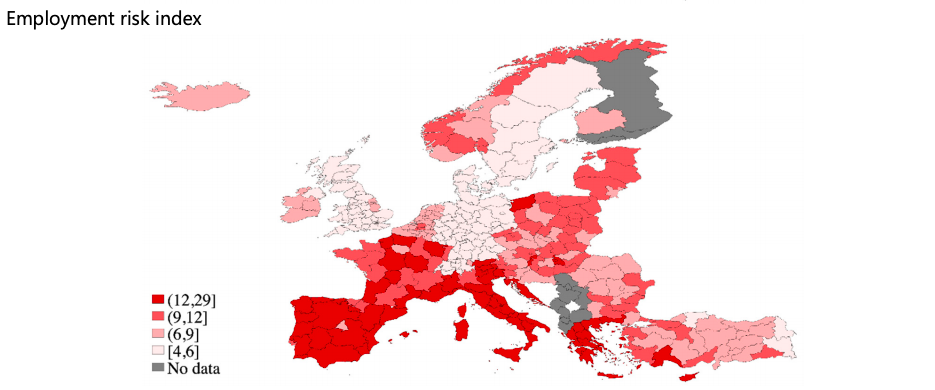
The outbreak of Covid-19 and the ensuing measures to contain the pandemic have brought Europe into a deep downturn. GDP is expected to drop by around 8% in the euro area this year (ECB (2020)), a significantly steeper decline than forecasted for the United States or Asia (IMF (2020)). One of the major reasons why the European economy is expected to be so hard-hit is its high share of small firms, especially in southern and eastern European countries. Small firms are financially more constrained and bank-dependent than larger firms. They also sell goods predominantly in local markets and with less diversified sources of revenue.
This Bulletin investigates which European regions face higher risks to employment from Covid-19. We first use data on local industry-level employment before the outbreak and construct a measure of local employment exposure to Covid-19, using the methodology developed in Doerr and Gambacorta (2020) for the US. We then extend the analysis by taking into account the share of employment among small firms in different regions. Specifically, we calculate an employment risk index based on the interaction of sectoral exposure and the share of small business employment. Our results show that while several European regions employ a high share of people in sectors particularly exposed to the economic consequences of the pandemic, the high share of small firms in southern Europe puts employment in those regions particularly at risk. We show that regions with a higher employment risk index, ie those with higher sectoral exposure and a higher share of small businesses, also exhibit a stronger increase in Google searches for unemployment, providing a cross-check of our measure of local employment risk.

Sources: Apple Covid-19 Mobility Trends Reports; Google Trends; authors’ calculations.
Key takeaways
- We construct employment risk indices for European regions that reflect the share of jobs under threat from Covid-19. The risk index is based on local employment in sectors that are more exposed to the pandemic and on the regional incidence of small firms.
- Employment in regions in southern Europe and France is shown to have high risk indices, while regions in northern Europe have lower risk indices. Eastern and central European regions have intermediate risk indices.
- Regions with a higher risk index have a bigger jump in Google searches for unemployment-related terms.

Sebastian Doerr ’13 is an Economist at the Bank for International Settlements. He is an alum of the Barcelona GSE Master’s in Economics.
